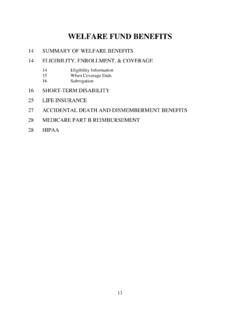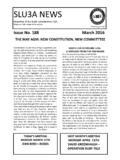Transcription of CLOZARIL - Medsafe
1 Page 1 of 19 NEW ZEALAND DATA SHEET CLOZARIL CLOZARIL can cause agranulocytosis. Its use should be limited to patients: with schizophrenia who are non-responsive to, or intolerant of, classical antipsychotic agents, or with schizophrenia or schizoaffective disorder who are at risk of recurrent suicidal behaviour (see section ), who have initially normal leukocyte findings (white blood cell count (WBC) 3500/mm3 ( x 109/L), and absolute neutrophil counts (ANC) 2000/mm3 ( x 109/L)), and in whom regular white blood cell counts and absolute neutrophil counts can be performed as follows: weekly during the first 18 weeks of therapy, and at least every 4 weeks thereafter throughout treatment.
2 Monitoring must continue throughout treatment and for 4 weeks after complete discontinuation of CLOZARIL . Prescribing physicians should comply fully with the required safety measures. At each consultation, a patient receiving CLOZARIL should be reminded to contact the treating physician immediately if any kind of infection begins to develop. Particular attention should be paid to flu-like complaints such as fever or sore throat and to other evidence of infection, which may be indicative of neutropenia. Close monitoring of bowel habits is also recommended for any signs of constipation or gastrointestinal hypomotility.
3 CLOZARIL must be prescribed and dispensed in accordance with appropriate local guidelines. The following conditions apply to the sale, supply and use of CLOZARIL in New Zealand under the consent notice from Medsafe . Mylan New Zealand Ltd draws prescribers, nurses, and patients attention to the following criteria: Clozapine may only be initiated and prescribed by: Registered medical practitioners as defined in the Health Practitioners Competence Assurance Act 2003 who are certified by the Medical Council of New Zealand as competent in the scope of practice of psychiatry ( psychiatrist); Medical practitioners employed as registrars in the branch of psychiatry who are under the supervision of the persons referred to above; Medical officers who: o are in the employment of a District Health Board.
4 And are under the supervision of persons who are registered medical practitioners as defined in the Health Practitioners Competence Assurance Act 2003 who are certified by the Medical Council of New Zealand as competent in the scope of practice of psychiatry. Clozapine prescription may only be continued by: Registered medical practitioners as defined in the Health Practitioners Competence Assurance Act 2003 who are registered with the Medical Council of New Zealand within the vocational scope of practice of general practice. The general practitioner can continue the prescribing of clozapine for a specific patient whose illness is well-controlled in collaboration, or following consultation, with the relevant community mental health service.
5 Due to the risk of agranulocytosis, all patients prescribed CLOZARIL in New Zealand must be registered to CareLink Plus, the CLOZARIL Patient Monitoring System (CPMS) by a registered medical practitioner. Additionally, prescribing physicians must also register themselves onto CareLink Plus to access patient information. Brand swapping between clozapine products is discouraged and should occur on the advice of a clinician. Prescribers and dispensers should verify that the patient has not previously developed an adverse reaction to clozapine that contraindicates further use of any clozapine containing product.
6 Clozapine is associated with an increased risk of myocarditis which has, in rare cases, been fatal. The increased risk of myocarditis is greatest in the first two months of treatment. Fatal cases of cardiomyopathy have also been reported rarely. Myocarditis and cardiomyopathy should be suspected in patients who experience persistent tachycardia at rest especially in the first two months of treatment and/or palpitations, arrhythmias, chest pain and other signs and symptoms of heart failure ( unexplained fatigue, dyspnoea, tachypnoea) or symptoms that mimic myocardial infarction.
7 If myocarditis or cardiomyopathy is suspected, CLOZARIL treatment should promptly be stopped and the patient immediately referred to a cardiologist. Page 2 of 19 1. Product Name CLOZARIL , 25 mg and 100 mg dose tablets. 2. Qualitative and Quantitative Composition Each tablet contains 25 mg or 100 mg of clozapine. CLOZARIL tablets contain lactose. For the full list of excipients, see section 3. Pharmaceutical Form CLOZARIL 25mg tablets are light yellowish round, flat with bevelled edges, scored with markings LO on one side, SANDOZ on the other and mm diameter. CLOZARIL 100mg tablets are light yellowish round, flat with bevelled edges scored with markings ZA on one side, SANDOZ on the other and 10 mm diameter.
8 4. Clinical Particulars Therapeutic indications Treatment-resistant schizophrenia CLOZARIL is indicated in adult patients with treatment-resistant schizophrenia, patients with schizophrenia who are non-responsive to or intolerant of classic antipsychotics. Non-responsiveness is defined as a lack of satisfactory clinical improvement despite the use of adequate doses of at least two marketed antipsychotics prescribed for adequate durations. Intolerance is defined as the impossibility of achieving adequate clinical benefit with classic antipsychotics because of severe and untreatable neurological adverse reactions (extrapyramidal side effects or tardive dyskinesia).
9 Dose and method of administration Dose The dosage must be adjusted individually. For each patient the lowest effective dose should be used. Cautious titration and a divided dosage schedule are necessary to minimize the risks of hypotension, seizure, and sedation. Initiation of CLOZARIL treatment must be restricted to those patients with a white blood cell (WBC) count 3500/mm ( x 109/L) and an absolute neutrophil count (ANC) 2000/mm ( x 109/L), and within standardised normal limits. Dose adjustment is indicated in patients who are also receiving medicinal products that have pharmacokinetic interactions with clozapine, such as benzodiazepines or selective serotonin re-uptake inhibitors (see section ).
10 In patients with a history of seizures or suffering from renal or cardiovascular disorders (note: severe renal or cardiovascular disorders are contraindications) the initial dose should be mg given once on the first day, and dosage increase should be slow and in small increments. Page 3 of 19 Switching from a previous antipsychotic therapy to CLOZARIL It is generally recommended that CLOZARIL should not be used in combination with other antipsychotics. When CLOZARIL therapy is to be initiated in a patient undergoing oral antipsychotic therapy, it is recommended that the dosage of other antipsychotics be reduced or discontinued by gradually tapering it downwards.















